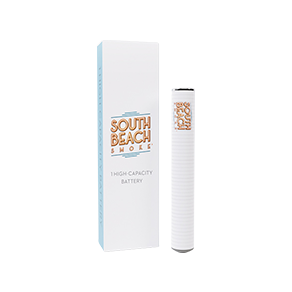- A
- B
- C
- D
- E
- F
- G
-
H
Holiday Vape Gift Guide How Do E-Cigarettes Work? How Long Do Vape Batteries Last? How Long Does Nicotine Stay In Your System? How to Deal with Smoking Relapse How to Manage Cravings and Withdrawal Symptoms When Switching to E-Cigarettes How to Pick the Right E-Cigarette Starter Kit for You How to Properly Use & Maintain Your E-Cigarette Device How To Troubleshoot Your Vape Pen Cartridge
- I
- J
- K
- L
- M
- N
- O
- P
- Q
- R
-
S
Shipping E-Cigs to Your City South Beach Smoke Mother's Day Vape Gift Guide South Beach Smoke Valentine's Day Vape Guide 2023 South Beach Smoke vs Logic E-Cigs South Beach Smoke's E-Cig Nicotine Delivery Program Spring Break Travelers E Cig Guide Summer Vape Guide 2022 Switch to Vaping to Beat the Cold
-
T
The Best Vape Pen Juice Flavors The Best Vape Temperature The Environmental Impact of Switching from Cigarettes to Vapes The Rise of Vaping Culture The Science Behind Vaping The Top Vape Influencers The Ultimate Guide to Transitioning from Smoking to Vaping: Common Mistakes and How to Avoid Them Throwing a 4th of July Vape Party Guide Tips for Vaping in the Heat Top 5 Must-Have E Cig Accessories Top 5 Vaping Blogs to Follow Top 5 Vaping Blogs to Follow Top Celebrities Who Vape 2022 Troubleshooting Common E-Cig Problems Troubleshooting Common E-Cigarette Problems
- U
-
V
Vape & Vape Juice Delivery to Your City Vape Battery Maintenance Vape Birthday Gift Guide Vape Pen Not Charging FAQ Vape Pod Vs Cartridge Which Is Better? Vape vs E Cig Comparison - Are E-Cigs and Vape Pens the Same? Vaping Abroad Vaping Etiquette - How to Vape In Public Vaping Facts vs Vaping Myths
- W
- X
- Y
- Z
- #
Addressing Common Misconceptions About Vaping
Addressing Common Misconceptions About Vaping
In recent years, vaping has emerged as a prominent alternative for individuals seeking to break free from the grip of traditional tobacco smoking. While the debate continues regarding its long-term impacts, it is important to separate fact from fiction. Making sure that the many myths about vaping are understood for what they really are is important. This blog aims to address common misconceptions surrounding vaping and shed light on its role as a smoking cessation tool.
Misconception #1: Vaping is More Harmful than Smoking
Contrary to some beliefs, numerous studies suggest that vaping is potentially less harmful than traditional smoking. Traditional cigarettes burn tobacco, releasing a cocktail of harmful chemicals, whereas e-cigarettes use a vaporizing mechanism. Renowned health organizations have acknowledged this distinction, suggesting that e-cigarettes could be a less harmful alternative for smokers.
Misconception #2: E-cigarettes Always Lead to Smoking Traditional Cigarettes
The "gateway theory" posits that vaping can lead individuals, especially the youth, to smoking traditional cigarettes. While some argue this point, others present a different narrative. Many smokers have actually turned to e-cigarettes as a stepping stone towards quitting smoking altogether, challenging the one-way direction suggested by the gateway theory.
Misconception #3: Vaping Doesn't Help in Quitting Smoking
Critics often question the efficacy of vaping as a smoking cessation aid. In contrast, countless testimonials indicate that individuals have successfully transitioned away from smoking with the aid of e-cigarettes. The availability of varying nicotine levels and even nicotine-free options, allows smokers to gradually reduce their dependency while still engaging in the familiar ritual of 'smoking'. Additionally, vaping offers psychological comfort by mimicking the familiar hand-to-mouth ritual associated with smoking. For many, this ritual is a significant part of the smoking experience, and vaping provides an alternative without the harmful combustion of tobacco. By addressing both the chemical dependency and the habitual behavior, vaping has emerged as a supportive tool for those seeking a smoke-free life.
Misconception #5: All Vaping Liquids Contain Nicotine
It's a common belief that all e-liquids contain nicotine. In reality, vapers have the freedom to choose e-liquids with their preferred nicotine strength, including options that contain no nicotine at all. This flexibility ensures that individuals can tailor their vaping experience to their specific needs. South Beach Smoke offers its Cartridges in a range of nicotine-strength so that smokers can choose their preferred option.
Misconception #6: Second-hand Vapor is as Harmful as Second-hand Smoke
The effects of second-hand smoke from traditional cigarettes are well-documented. While the discourse on the long-term effects of second-hand vapor continues, it is important to distinguish between the constituents of vapor and smoke. Preliminary studies indicate that the composition of vapor, which lacks many of the harmful byproducts of burning tobacco, may pose fewer risks to bystanders than traditional cigarette smoke.
Furthermore, the visual similarity between vapor clouds and cigarette smoke may contribute to the perception that they are equally harmful. However, vapor dissipates more quickly than smoke and does not have the same lingering odor or residue. This distinction is crucial in understanding the differences between second-hand exposure from vaping and smoking. As the scientific community continues to explore this topic, it's essential to stay informed and base opinions on emerging evidence and research.
Conclusion
Navigating through the cloud of misinformation, it is essential to rely on scientific evidence and credible sources. While the discourse continues, it is undeniable that vaping has become a significant ally for many in their journey to quit smoking. We encourage readers to educate themselves further and consult healthcare professionals for personalized advice.


